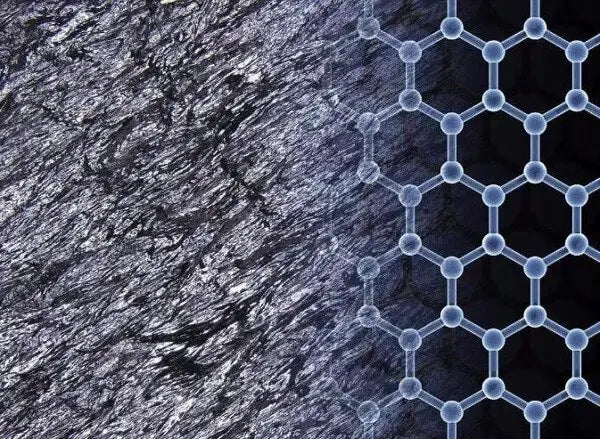New materials, also known as advanced materials, refer to those recently developed or under development that exhibit superior performance compared to traditional materials.<
They cover materials recently developed or in the research process, demonstrating exceptional capabilities that surpass conventional materials.
New materials technology is designed according to human intent through a series of research processes, including physical research, materials design, processing and experimental evaluation, all with the goal of creating innovative materials that meet a variety of needs. needs.
The essence of new materials
- Use of new concepts, methods and technologies to synthesize or prepare high-performance materials or special functions. For example, carbon fiber represents a completely new concept in new materials, produced through a specialized carbonization process using polyacrylonitrile precursor fibers.
- The redevelopment of traditional materials to significantly enhance and improve their performance, such as through nanomodification and rare earth modification. The modification of engineering plastics is currently an active area, with increasing varieties and continually improving performance.
Strategic positioning of new materials
This includes functional positioning, directional positioning, technical positioning and market positioning:
- Functional Positioning: A fundamental and pillar strategic industry, forming the basis and precursor of modern high-tech industries. Advances in materials could potentially trigger new industrial revolutions.
-
Directional Positioning: Focused on the development of the national economy and key engineering needs, advancing materials in key areas such as new energy, next-generation information technology, biomaterials, aerospace, new energy vehicles, modern transportation and energy-saving environmental protection energy. This includes new functional materials, high-performance structural materials and state-of-the-art base materials. New functional materials:
rare earth functional materials, new membrane materials, functional ceramic materials, semiconductor lighting materials and new functional polymer materials. High-performance structural materials:
High-quality special steels, new alloys, new engineering plastics and high-performance composite materials (such as carbon fiber composites). State-of-the-art basic materials:
Nanomaterials, superconducting materials and smart materials. - Technical Positioning: Development of key materials and technologies with independent intellectual property rights to improve self-innovation capabilities, forming a scientific and technological innovation system and industrial scale for the development of China's new materials industry.
- Market Positioning: Mainly meeting the main needs of the national economy and the construction of national defense. Aiming at the cutting-edge international high-technology market, characterized by high technical content, high added value and high cost-benefit ratio.
Types of new materials
(1) New Composite Materials
The use of new composite materials dates back to ancient times. Historical examples include straw-reinforced clay and the century-old steel-reinforced concrete, both composed of two different materials. In the 1940s, due to the needs of the aviation industry, glass fiber reinforced plastics (commonly known as fiberglass) were developed, marking the advent of composite materials. Since the 1950s, high-strength, high-modulus fibers such as carbon, graphite and boron fibers have been developed. The 1970s saw the emergence of aramid and silicon carbide fibers.
These high strength, high modulus fibers can be combined with non-metallic matrices such as synthetic resins, carbon, graphite, ceramics, rubber or metallic matrices such as aluminum, magnesium, titanium to form unique composite materials. Ultra-high molecular weight polyethylene fibers, known for their exceptional strength and resistance to chemical agents and aging, also excel in high-frequency sonar transmission and resistance to seawater corrosion.
These fibers are used in high-frequency sonar fairings for naval vessels, improving mine detection and scanning capabilities. In addition to military applications, they have broad prospects in automobile manufacturing, shipbuilding, medical devices and sports equipment. Its introduction has attracted significant attention and importance in developed countries.
(2) Superconducting Materials
Some materials exhibit zero electrical resistance at a certain critical temperature, a phenomenon known as superconductivity. Another characteristic of superconductors is their diamagnetism – the inability of magnetic field lines to penetrate a superconductor when it becomes free of resistance. For example, the electrical resistance of common metals such as copper decreases with temperature and reaches a certain value close to 0K.
In 1919, Dutch scientist Heike Kamerlingh Onnes discovered that mercury's resistance completely disappears at 4.2K (-269°C), demonstrating superconductivity and diamagnetism. The critical temperature (TC) at which the resistance of a superconductor becomes zero is a fundamental characteristic. Superconducting materials research focuses on overcoming the “temperature barrier” to find high-temperature superconductors.
Practical superconductors such as NbTi and Nb3Sn have been commercialized, finding applications in nuclear magnetic resonance imaging (NMRI), superconducting magnets, and large accelerator magnets. SQUIDs, as examples of superconductors in weak electrical applications, play a crucial role in detecting weak electromagnetic signals, unmatched in sensitivity by any non-superconducting device.
However, the low critical temperatures of conventional superconductors, requiring complex and expensive liquid helium systems (4.2K), have significantly limited their applications. The advent of high-temperature oxide superconductors has broken this temperature barrier, raising the applicable temperature from liquid helium (4.2 K) to liquid nitrogen (77 K) levels. Liquid nitrogen is a more economical refrigerant with greater heat capacity than liquid helium, making engineering applications much easier.
High-temperature superconductors also have considerable magnetic capabilities, capable of generating magnetic fields in excess of 20T. Applications of superconducting materials include energy generation, transmission, and storage. Superconducting generators with magnetic coils can increase magnetic field strength to 50,000-60,000 Gauss with almost no power loss, improving the capacity of a single unit by 5-10 times and efficiency by 50% compared to conventional generators.
Transmission lines and superconducting transformers can transmit electricity to users with minimal losses. For example, about 15% of electrical energy is lost in copper or aluminum transmission lines in China, totaling more than 100 billion kWh annually. Switching to superconducting transmission could save enough electricity to replace the need for dozens of large power plants.
Superconducting maglev trains operate using the diamagnetic property of superconductors, which repel magnetic field lines, allowing the superconductor to levitate above a permanent magnet or magnetic field. This maglev effect is used in high-speed superconducting maglev trains, such as the one at Shanghai Pudong International Airport. In superconducting computers, the near-zero resistance of superconducting materials allows densely packed circuits on integrated chips without overheating, significantly increasing the speed of computing.
(3) Energetic Materials
Energetic materials include solar cell materials, hydrogen storage materials and solid oxide fuel cell materials. Solar cell materials, a new energy material, have seen advances such as IBM's multilayer composite solar cells, with conversion efficiencies of up to 40%. Hydrogen, an efficient and pollution-free energy source, faces important challenges in storage and transportation. About 50% of the US Department of Energy's hydrogen research funding is allocated to hydrogen storage technology.
Hydrogen can corrode materials, causing embrittlement and leakage, in addition to posing a risk of explosion during transport. Hydrogen storage materials can form hydrides with hydrogen, releasing hydrogen upon heating and recharging upon depletion. Current hydrogen storage materials are mainly metal compounds such as LaNi5H and Ti1.2Mn1.6H3. Solid oxide fuel cell research is active, focusing on materials such as solid electrolyte membranes, cellular cathode materials, and organic proton exchange membranes for proton exchange membrane fuel cells.
(4) Smart Materials
Smart materials represent the fourth generation of materials, after natural polymers, synthetics and artificially engineered materials. They are a significant direction in the development of new modern high-tech materials. Internationally, numerous technical advances have been achieved in smart materials. For example, the UK's BAE Systems has developed wire sensors to test strain and temperature in aircraft skins.
The UK has also developed a fast-response shape memory alloy with a lifetime of one million cycles and high power output, useful in brakes with response times as short as 10 minutes. Shape memory alloys have been successfully applied in satellite antennas, medical fields and more. Other smart materials include piezoelectric materials, magnetostrictive materials, conductive polymers, electrorheological fluids, and magnetorheological fluids, serving as drive components in various applications.
(5) Magnetic Materials
Magnetic materials are categorized into soft and hard (permanent) magnetic materials.
(1) Soft magnetic materials
Soft magnetic materials are easily magnetized and demagnetized, losing their magnetism when the magnetic field is removed. Characterized by high magnetic permeability (μ=B/H), they are easily magnetized to high strength in magnetic fields, but retain little residual magnetism when the field is removed.
These materials are widely used in electronic technology, particularly in high-frequency applications such as magnetic cores, headers and memory cores, and in electrical engineering for transformers and relay switches. Common soft magnetic materials include iron-silicon alloys, iron-nickel alloys, and amorphous metals. Fe-(3%-4%)Si alloy, the most commonly used soft magnetic material, is used in low-frequency transformers, motors and generators.
Iron-nickel alloys, such as Permalloy (79%Ni-21%Fe), offer greater magnetic permeability and lower loss than iron-silicon alloys and are used in telecommunications, computers and control systems. Amorphous metals, differing from typical metals by their non-crystalline structure, are composed of Fe, Co, Ni and metalloids such as B, Si.
Produced by rapidly cooling molten metal to obtain a non-crystalline atomic structure, amorphous metals exhibit excellent magnetic properties and are used in energy-efficient transformers, magnetic sensors, recording heads, and more. Some amorphous metals also have excellent corrosion resistance, high strength and good toughness.
(2) Permanent Magnetic Materials (Hard Magnetic Materials)
Permanent magnetic materials retain their magnetism after magnetization, even when the external magnetic field is removed. They are characterized by high residual magnetism and high coercivity, making them suitable for permanent magnets used in compasses, instruments, micromotors, electric motors, recorders, telephones, medical applications and more. Permanent magnetic materials include ferrites and metal permanent magnets.
Ferrites, widely used for their large volume, wide application and low cost, have moderate magnetic properties and are suitable for general permanent magnet applications. Metal permanent magnets started with high-carbon steel but have evolved to higher performance materials such as Al-Ni-Co and Fe-Cr-Co alloys; rare earth magnets such as earlier rare earth-cobalt (Re-Co) alloys (primarily SmCo5 and Sm2Co17 made using powder metallurgy) and widely used niobium-iron-boron (Nb-Fe-B) rare earth magnets. Nb-Fe-B magnets not only offer superior performance, but also lack the scarce element cobalt, quickly becoming representatives of high-performance permanent magnets, used in high-performance speakers, electronic hydrometers, resonance instruments nuclear magnetic, micromotors, car starters and much more.
(6) Nanomaterials
Nanotechnology is an integrated system that combines high technology and cutting-edge science, fundamentally involving the understanding and modification of nature at the nanoscale, directly manipulating and organizing atoms and molecules to create new materials. Nanotechnology encompasses seven areas: nanosystem physics, nanochemistry, nanomaterials science, nanobiology, nanoelectronics, nanofabrication and nanomechanics.
Nanomaterials, named in the 1980s, are solid materials composed of nanoparticles no larger than 100 nanometers in size. The preparation and synthesis of nanomaterials continues to be a major focus of research, and although some progress has been made in sample synthesis, large-scale production of bulk samples is still a challenge, making the study of nanomaterial preparation critical to its application.
Top 20 new materials
The materials industry is the basic industry of the national economy, and new materials are the precursors to the development of the materials industry.
Graphene, carbon nanotubes, amorphous alloys, foamy metals, ionic liquids… 20 new materials bring unlimited opportunities for the development of the materials industry.
Today, the scientific and technological revolution is developing rapidly, new material products are changing with each passing day, and the pace of industrial modernization and material replacement is accelerating.
New materials technology is integrated with nanotechnology, biotechnology and information technology.
Structural and functional integration and functional materials are becoming smarter.
The ecological characteristics of the materials, low carbon, green and recyclable, have attracted a lot of attention.
Based on the research progress of well-known domestic and foreign research institutions and enterprises, scientific and technological media analysis, and industry hot spot research, this article selected 20 new materials.
The following is detailed information of relevant materials (in no particular order).
1. Graphene

Advance:
Extraordinary electrical conductivity, extremely low resistivity, extremely low and extremely fast electron migration speed, tens of times greater resistance and excellent light transmission over steel.
Development trend :
The 2010 Nobel Prize in Physics has made graphene popular in technology and capital markets in recent years.
In the next 5 years, the use of graphene will grow explosively in the areas of photoelectric displays, semiconductors, touch screens, electronic devices, energy storage batteries, displays, sensors, semiconductors, aerospace, military, composite materials and biomedicine.
Main research institutes (companies):
Graphene Technologies, Angstron Materials, Graphene Square, Forsman Technology, etc.
2. Airgel
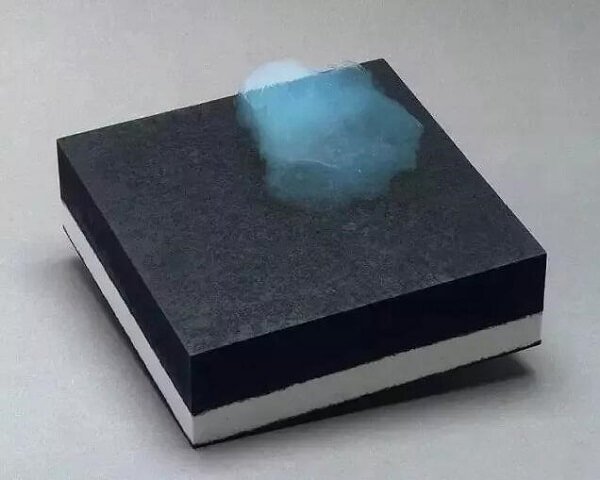
Advance:
High porosity, low density, light weight, low thermal conductivity, excellent thermal insulation properties.
Development Trend:
New materials with great potential.
They have great potential in the areas of energy conservation and environmental protection, thermal insulation in electrical appliances and construction.
Main research institutes (companies):
Fosman Technology, WR Grace, Fuji-Silysia, Japan, etc.
3. Carbon nanotubes
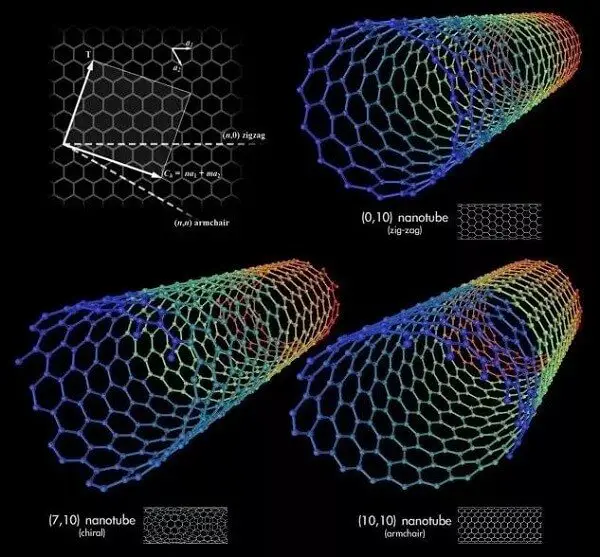
Advance:
High electrical conductivity, high thermal conductivity, high modulus of elasticity, high tensile strength, etc.
Development Trend:
Electrodes for functional devices, catalyst carriers, sensors, etc.
Main research institutes (companies):
Unidym, Inc., Toray Industries, Inc., Bayer Materials Science AG, Mitsubishi Rayon Co., Ltd., Forsman Technology, Suzhou First Element, etc.
4. Fullerenes
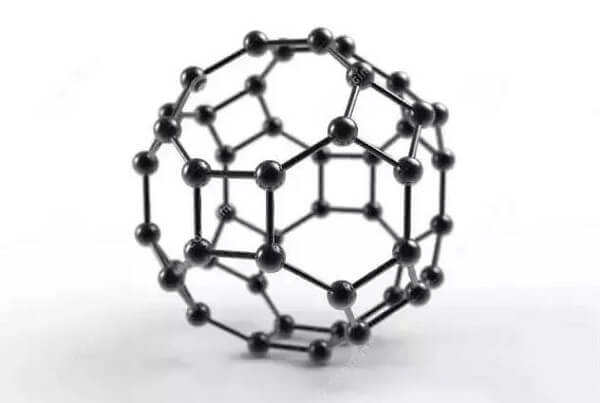
Advance:
With linear and nonlinear optical properties, alkali metal fullerene superconductivity, etc.
Development Trend:
The future has important prospects in the areas of life sciences, medicine, astrophysics, etc., and is expected to be used in photoelectric devices such as optical converters, signal conversions and data storage.
Main research institutes (companies):
Michigan State University, Xiamen Funa New Materials, etc.
5. Amorphous alloy
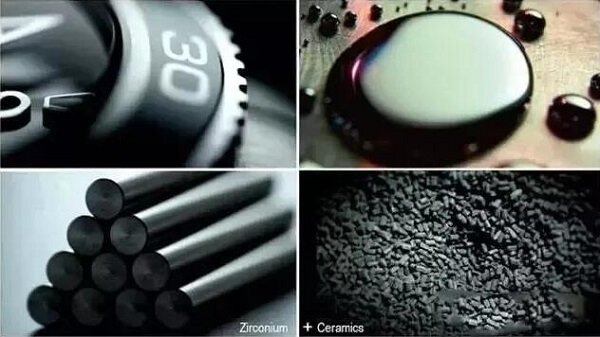
Advance:
High strength and toughness, excellent magnetic permeability and low magnetic loss, as well as excellent liquid flow.
Development trend :
It can be used in high-frequency and low-loss transformers, structural parts of mobile terminal equipment, etc.
Main research institutes (companies):
Liquidmetal Technologies, Inc., Institute of Metals Research, Chinese Academy of Sciences, BYD, etc.
6. Metallic Foam

Advance:
Light weight, low density, high porosity and large specific surface area.
Development trend :
It has conductivity and can replace application fields where non-metallic inorganic materials cannot conduct electricity.
It has great potential in the area of acoustic insulation and noise reduction.
Main research institutes (companies):
Alcan (Aluminum Association, USA), Rio Tinto, Symat, Norwegian Hydro, etc.
7. Ionic Liquid

Advance:
With high thermal stability, wide range of liquid temperature, adjustable acid and alkali, polarity, coordination ability and etc.
Development Trend:
It has broad application prospects in the field of green chemical industry, as well as biology and catalysis.
Main research institutes (companies):
Solvent Innovation, BASF, Lanzhou Institute of Physics, Chinese Academy of Sciences, Tongji University, etc.
8. Nanocellulose
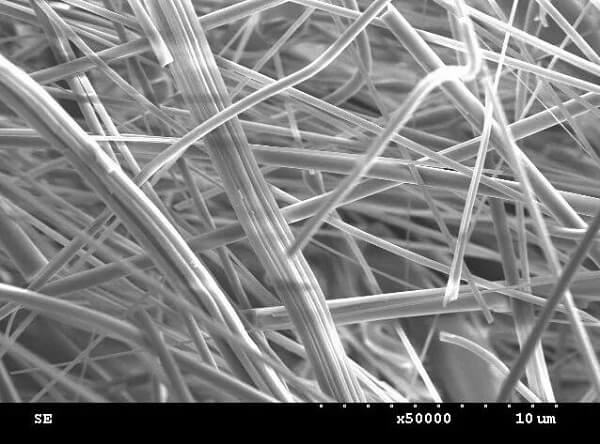
Advance:
It has good biocompatibility, water retention capacity and a wide range of pH stability.
It also has a nano-lattice structure and high mechanical properties.
Development trend :
It has great prospects in biomedicine, improver, paper industry, purification, conductive and inorganic compound foods, as well as industrial magnetic compounds.
Main research institutes (companies):
Cellu Force (Canada), US Forest Service, Innventia (Sweden), etc.
9. Perocakita Namometer
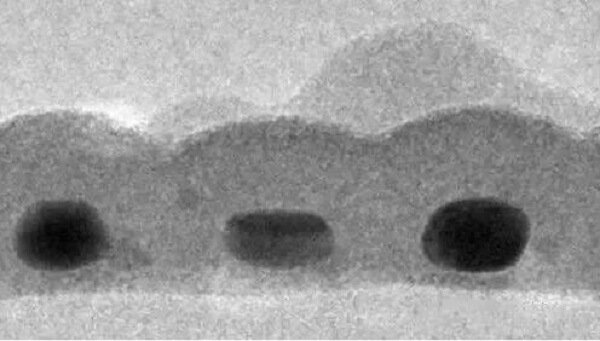
Advance:
Namometer perocakite has giant magnetic resistance, high ionic conductivity and plays a catalytic role in the precipitation and reduction of oxygen.
Development trend :
It will have enormous potential in the areas of catalysis, storage, sensors and light absorption in the future.
Main research institutes (companies):
Epry, AlfaAesar, etc.
10. 3D printing materials

Advance:
Changing traditional industrial processing methods can quickly achieve the formation of complex structures.
Development Trend:
The revolutionary molding method has great prospects in the field of complex structure molding and rapid processing molding.
Main research institutes (companies):
Object, 3DSystems, Stratasys, Huashu Hi-Tech, etc.
11. Flexible Glass

Advance:
It changes the rigid and brittle characteristics of traditional glass and realizes the revolutionary innovation of glass flexibility.
Development Trend:
The prospect will be huge in the field of future flexible displays and foldable devices.
Main research institutes (companies):
Corning, Germany SCHOTT, etc.
12. Self-assembly (self-repairing) materials

Advance:
The self-assembly of the material's molecules will realize the “intelligence” of the material itself.
Changing the previous material preparation method to realize the material to form a certain shape and structure spontaneously.
Development Trend:
Changing traditional materials preparation and repair methods has great prospects in the areas of molecular devices, surface engineering and nanotechnology.
Main research institutes (companies):
Harvard University, etc.
13. Biodegradable Plastics
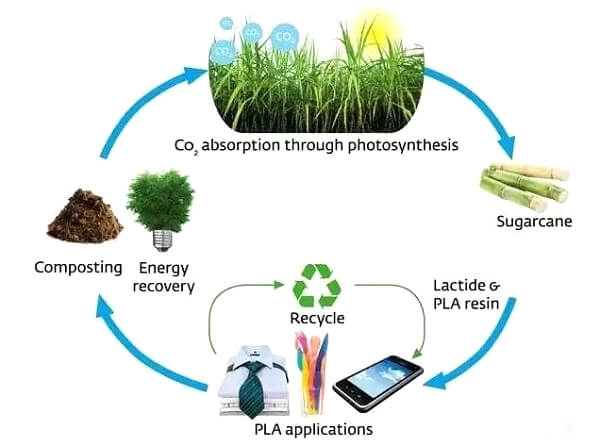
Advance:
Plastics can be degraded naturally and raw materials come from renewable resources, which changes traditional plastics' dependence on fossil resources such as oil, natural gas and coal, and also reduces environmental pollution.
Development Trend:
It will replace traditional plastics in the future and has great prospects.
Main research institutes (companies):
Natureworks, Basf, Kaneka, etc.
14. Titanium and carbon compounds

Advance:
This type of material has high strength, low density and excellent corrosion resistance.
And it also has unlimited prospects in the aviation and civil fields.
Development Trend:
In the future, materials will have a wide range of potential applications in light weight, high strength and corrosion resistance.
Main research institutes (companies):
Harbin Institute of Technology.
15. Metamaterials

Advance:
It has physical properties that conventional materials do not have, such as negative permeability and negative permittivity.
Development Trend:
It changed the traditional concept of processing according to the nature of the material.
In the future, the characteristics of materials can be designed according to needs, and the potential will be infinite and revolutionary.
Main research institutes (companies):
Boeing, Kymeta, Shenzhen Guangqi Research Institute, etc.
16. Superconducting Material

Advance:
In the superconducting state, the material has zero resistance, no current loss, and exhibits antimagnetic properties in a magnetic field.
Development Trend:
If high-temperature superconducting technology is developed in the future, it is expected to solve the problems of power transmission loss, heating of electronic devices, and new green transmission magnetic suspension technology.
Main research institutes (companies):
Sumitomo Japan, Bruker Germany, Chinese Academy of Sciences, etc.
17. Shape memory alloy

Advance:
After preforming, after being forced to deform by external conditions, it is then processed under certain conditions and restored to its original shape to realize the design and application of reversible deformation of the material.
Development Trend:
It has great potential in space technology, medical equipment, mechanoelectronic equipment and other fields.
Main research institutes (companies):
Youyan New materials, etc.
18. Magnetostrictive Material

Advance:
Under the action of magnetic field, it can produce stretching or compression performance and realize the interaction between material deformation and magnetic field.
Development Trend:
It is widely used in intelligent structural devices, shock absorption devices, power conversion structures, high-precision motors and other fields, and has better performance than piezoelectric ceramics under some conditions.
Main research institutes (companies):
ETREMA, American, British Rare Earth Products Company, Japan Sumitomo Light Metal Company, etc.
19. Magnetic (Electrical) Fluid Materials

Advance:
Liquid state, combining the magnetic properties of solid magnetic materials and the fluidity of liquids.
It has characteristics and applications that traditional magnetic bulk materials do not have.
Development Trend:
It is used in the fields of magnetic sealing, magnetic refrigeration, magnetic heat pump, etc., and changes traditional sealed refrigeration and other methods.
Main research institutes (companies):
American ATA Applied Technology Corporation, Japan Panasonic, etc.
20. Smart Polymer Gel

Advance:
It can sense and respond to changes in the surrounding environment and has similar biological response characteristics.
Development Trend:
The expansion-contraction cycle of smart polymer gel can be used for chemical valves, adsorption separation, sensors and memory materials.
The power provided by the cycle is used to design the “chemical engine”.
The controllability of the mesh is suitable for intelligent drug delivery systems, etc.
Main research institutes (companies):
American and Japanese universities.
21. Holographic film

Introduction:
Holographic film is an innovative application of hologram technology. It is a patented projection film that, for the first time internationally, allows images to be viewed directly from the front and back, at multiple angles, including 360 degrees, regardless of lighting conditions.
Holographic film provides dynamic aerial displays with sharp images while allowing viewers to see the background through the film. It can be combined with interactive software to create three-dimensional interactive images, immersing audiences in a captivating spatial experience.
With unparalleled advantages such as high definition, bright light resistance, ultra-thin and anti-aging properties, it is poised to become one of the most promising materials of the future.
Future trends:
Given its ability to provide dynamic aerial displays and sharp images, while also allowing audiences to see the background and interact with three-dimensional images, holographic film presents numerous unparalleled benefits. It is at the forefront of material innovation, aimed at attracting more scientific research.
Predictions for future trends in holographic film development include two main aspects:
First, molecular-level nano-optical components, centered on holographic color filter crystal (HCFC) and integrating nanotechnology with a multidisciplinary approach that combines materials science, optics and polymer science.
Secondly, the film will feature advanced precision optical structures in its lightweight design, ensuring superior high-definition, high-brightness images.
The material's exceptional clarity and sleek, minimalist design contribute to its use in electronic devices and optical films. The development of holographic film technology is a focus for many countries and, without exaggeration, encapsulates the future. Whichever nation masters and utilizes this technology first will lead the way into the advanced technological era.
22. Metallic Hydrogen

Introduction:
Metallic hydrogen is a conductive state of liquid or solid hydrogen formed under pressures of millions of atmospheres. Its electrical conductivity is similar to that of metals, hence the name metallic hydrogen. As a high-density, high-energy storage material, metallic hydrogen was previously predicted to be a superconductor at room temperature.
It contains an enormous amount of energy, 30-40 times greater than that of conventional TNT explosives. On January 26, 2017, Science magazine reported that the Harvard University laboratory had successfully created metallic hydrogen. However, on February 22, 2017, due to a mishandling error, the world's only sample of metallic hydrogen disappeared.
Theoretically, obtaining metallic hydrogen under extremely high pressure is certainly possible, but more research is needed before scientists can acquire samples. Most known superconductors require cooling with liquid helium (-269°C) or liquid nitrogen (-196°C), which limits the development of superconducting technology.
Unlike chemists, astronomers refer to all elements except hydrogen and helium as metals. Under conditions of high temperature and high pressure, gaseous hydrogen can also become conductive metallic hydrogen.
For example, Jupiter's outer layer consists of 1,000 kilometers of gaseous molecular hydrogen, beneath which lies a 24,000-kilometer layer of liquid molecular hydrogen, followed by a 45,000-kilometer layer of liquid metallic hydrogen.
In 1936, the American scientist Wigner calculated for the first time the pressure at which hydrogen transitions to a metal, suggesting that the critical pressure for this transformation varied between one and ten million atmospheres.
Future Development Trends:
The superconducting critical temperature of metallic hydrogen, which is the maximum temperature at which it exhibits superconductivity, ranges from -223°C to -73°C. It could potentially be used at temperatures close to those of solid carbon dioxide (-78.45°C), which would significantly advance superconducting technology.
Because metallic hydrogen is a high-density material, using it as fuel would greatly reduce the size and weight of rockets, leading to a monumental leap in space exploration. The advent of metallic hydrogen, similar to the birth of the steam engine, will trigger a revolutionary era in the field of science and technology.
Metallic hydrogen exists in a metastable state and could be used to create “magnetic cages” to confine plasma containing the scalding ionized gas. Controlled nuclear fusion reactions would then convert nuclear energy into electrical energy, offering a cheap and clean energy source. This energy would allow the construction of “sun-mimicking factories” on Earth, ultimately solving humanity’s energy crisis.
23. Supersolid

Overview: A supersolid is actually similar to a superfluid, denoting a solid substance that possesses superfluid properties, essentially combining the characteristics of “superfluid + solid”. In simple terms, a supersolid not only maintains the ordered atomic arrangement typical of a crystalline state, but also flows without friction, like a superfluid.
At extremely low temperatures, holes within a supersolid's crystal structure can clump together and flow freely throughout the material. If a solid object is placed within the gaps on one side of the supersolid, it will pass through the supersolid with these gaps, moving as freely as if it were passing through walls.
Future Trends: This new state of matter can only exist under conditions of extreme cold and ultra-high vacuum, indicating that for now we cannot apply it widely. However, a deeper understanding of this seemingly paradoxical state of matter could improve our understanding of the properties of superfluids and superconductors, significantly advancing industries such as superconducting magnets, superconducting sensors and power transmission.
In the future, vacancies in a supersolid will become coherent entities that can move freely within the remaining solid, similar to a superfluid. Bose-Einstein condensate is a peculiar state of matter that occurs at ultracold temperatures, where the quantum properties of atoms become extremely pronounced, exhibiting significant wave behavior.
24. Wooden sponge
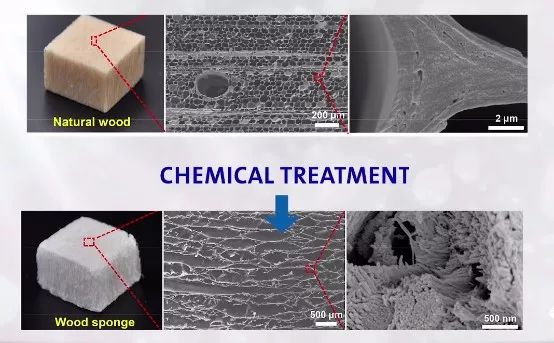
Overview:
Wood sponge, created by chemically treating wood to remove hemicellulose and lignin, is excellent at absorbing oils from water. It can absorb up to 16-46 times its own weight in oil and can be reused up to 10 times. This innovative sponge surpasses all other sponges and pads currently in use in terms of capacity, quality and reusability.
Future development:
Oil and chemical spills have caused unprecedented damage to bodies of water around the world. As an ecological solution for cleaning the oceans, the wooden sponge presents an effective means of solving this problem.
25. Time Crystals

Overview:
Time crystals, also known as spacetime crystals, are four-dimensional crystals that exhibit periodic structures in both space and time. Normally, we find three fundamental states of matter: solid, liquid and gas.
However, as science advanced, the concept of states of matter expanded to include plasma, Bose-Einstein condensates, supercritical fluids, and more. Time crystals represent a new state of matter and a phase of disequilibrium that breaks temporal translational symmetry.
The concept of time crystals was first proposed by Nobel laureate Frank Wilczek in 2012. We are familiar with three-dimensional crystals such as ice and diamonds – geometrically symmetrical structures created by the periodic arrangement of microscopic particles in space.
While teaching his students, Wilczek pondered whether the concept of three-dimensional crystals could be extended to the four-dimensional realm of space-time, allowing matter to exhibit periodic arrangements over time.
That is, time crystals change states at different times and these changes are cyclical. For example, a time crystal might be sugar one second, brown sugar the next, and then back to sugar the third second.
Future trends:
In September 2021, four theoretical scientists – Norman Yao, Vedika Khemani, Dominic Else and Masaki Watanabe – were jointly awarded the “Breakthrough Prize in Fundamental Physics”, marking broader recognition for the new field of discrete-time crystals.
In late 2021, the discrete-time crystal experiment led by Google's quantum computing team was named one of the top physics breakthroughs of the year by the American Physical Society (APS) Physics and the Institute of Physics (IOP) Physics World.
Research on discrete-time crystals has revolutionized our understanding of periodically driven systems, many-body localization, prethermalization, and quantum thermalization processes. It also encouraged a wide range of researchers from different areas to delve deeper into this area.
The evolution of discrete-time crystals shows that scientific exploration is often challenging, requiring refutations and rigorous academic debates. In the realm of scientific discovery, insightful errors are more valuable than mediocre truths because they can harbor new ideas.
Time crystals have benefited from rapid advances in quantum computing technology, which have allowed their rapid development rather than obscurity.
26. Quantum Stealth Material
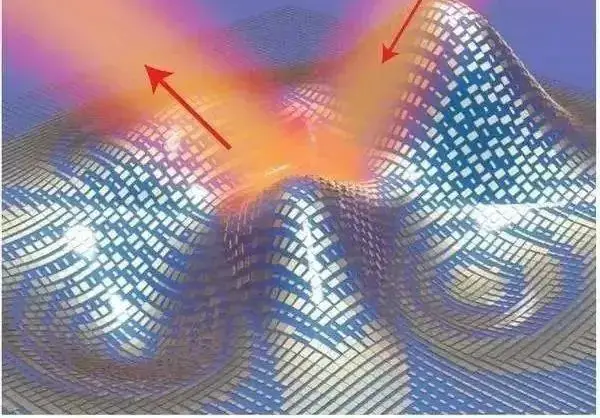
Introduction:
Canadian biotechnology company Hyperstealth Biotechnology has developed an advanced material known as “Quantum Stealth” (Invisible Fabric). This fabric, dubbed “Quantum Stealth camouflage,” achieves invisibility by bending light waves.
Future trends:
This material could be used to create invisibility cloaks, helping soldiers on the battlefield carry out highly challenging missions through concealment. Company CEO Guy Cramer stated: “The 'Quantum Stealth' material can not only help special forces carry out attacks during the day, but can also make it easier for a soldier to escape when encountering unexpected danger.
Furthermore, this material promises to be applied to the next generation of stealth aircraft, submarines and tanks, allowing them to achieve true invisibility and allowing troops to attack the enemy without being seen.”
27. Everlasting material that doesn't dry out

Overview: This material, composed of polymers and water, is conductive and remains perpetually wet.
Future Perspectives: In the future, this material has the potential to be used to create artificial skin and flexible robots with biomimetic capabilities.
28. Transition metal dichalcogenides
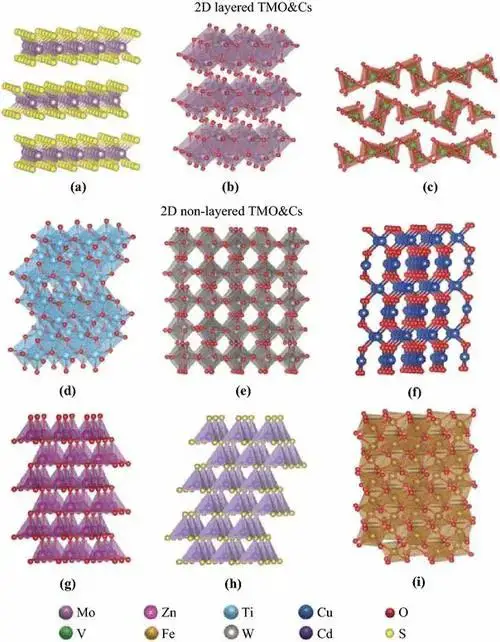
Introduction:
Transition metal dichalcogenides (TMDCs) have a simple two-dimensional structure and are super innovative materials, on a par with graphene. They are typically composed of a transition metal element M (such as molybdenum, tungsten, niobium, rhenium, titanium, etc.) and a chalcogen element X (such as sulfur, selenium, tellurium, etc.).
Due to their relatively low cost and ease of fabrication into extremely thin and stable layers, along with their semiconductor properties, TMDCs have emerged as ideal materials in the field of optoelectronics.
Future Development Trends:
If electrons and holes are injected into TMDCs, they will recombine when they meet and then emit photons. This photonic-electronic conversion capability is promising for TMDCs in the domain of optical information transmission, where they could serve as miniature, low-power light sources or lasers.
TMDCs can also be combined with various two-dimensional materials to create heterojunctions with minimal lattice mismatch issues. Such heterojunction photonic devices are expected to demonstrate superior performance over a wider spectral range.
29. Cryogenic Boiling Materials
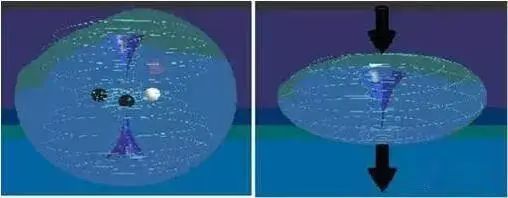
Overview:
Cryogenically boiling materials are substances that behave in the opposite way to thermally boiling materials, changing from solid to liquid to gaseous as the temperature decreases. These materials remain solid in high temperatures and environments, with their strength increasing as the temperature increases, being able to withstand temperatures in excess of 10,000 degrees Celsius.
They liquefy at -121°C and turn into gas at -270°C. Boiling cryogenic materials are considered supermaterials. Compared to the most advanced superconducting and high-temperature-resistant materials currently under development, they exhibit superior high-temperature strength and superconductivity.
When doped with inert thermal boiling materials, the low temperature and ultra-low temperature resistance of cryogenic boiling materials can be enhanced, providing exceptional strength over a wider temperature range.
Cryogenic metallic materials exhibit superconducting properties at room temperature, eliminating the need for high-cost, low-temperature environments. Therefore, they have immense potential for research and practical applications.
Future Development Trends:
Industry analysts suggest that boiling cryogenic materials could be widely used in aerospace, supermachines and electronic devices. For example, in the aerospace industry, these materials could be used to manufacture higher-performance engines and spacecraft casings.
They are ideal for spacecraft traveling at third cosmic speed or higher, where components must maintain ultra-high hardness under extreme temperatures generated by high-speed travel and still function effectively in the cold and ultra-cold conditions of space.
Boiling cryogenic materials could drive a technological revolution in the aerospace industry. However, their synthesis or extraction from the Moon presents significant challenges and there is a long way to go before these materials can be applied.
30. Magnetorheological Fluids
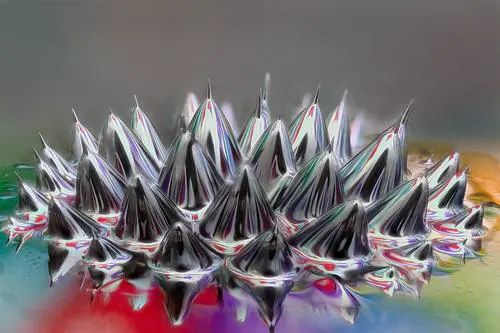
Introduction:
Magnetorheological fluids, also known as magnetic fluids, ferrofluids or simply magfluids, represent an innovative class of functional materials that combine the fluidity of liquids with the magnetic properties of solid magnets. Composed of nanometer-scale magnetic solid particles, carrier liquids, and surfactants, these stable colloidal liquids exhibit no magnetic attraction at rest.
However, they exhibit magnetic properties when exposed to an external magnetic field. These unique characteristics have led to its wide application and significant academic value.
Magnetorheological fluids produced from nanometallic and alloy powders demonstrate superior performance and are widely used in demanding environments for magnetic fluid seals, damping systems, medical devices, sound modulation, optical displays and magnetorheological separation processes.
Future trends:
In recent years, we have seen numerous scientific advances in the application of magnetorheological materials in new frontiers such as aerospace, defense, healthcare and transportation. As technology advances, these applications expand and the demand for related scientific and technical knowledge constantly increases.
Recognized as one of the materials with the greatest potential for future development, magnetorheological fluids have attracted international attention.
Although China entered the field of magnetorheological research later than others, it is quickly gaining momentum. With the monopoly on cutting-edge application technologies once held by developed countries such as the UK and the US gradually diminishing, competition in magnetorheological materials research is expected to intensify in the coming years.
31. Solid lining material
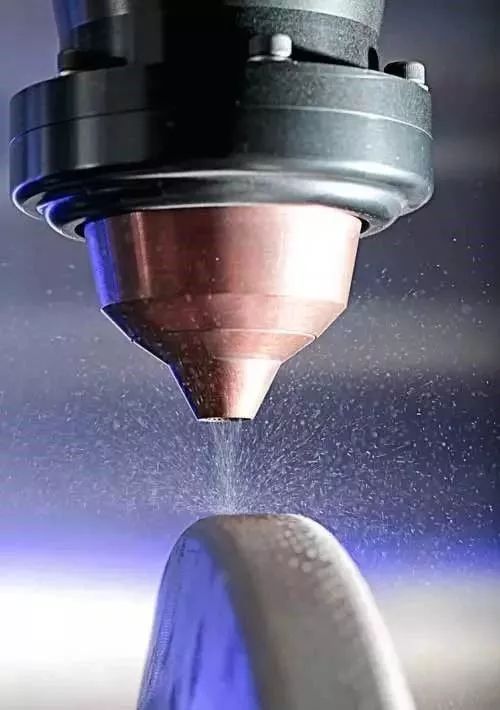
Introduction:
This coating material is a glassy, iron-based alloy designed specifically for industrial drills and boring tools, offering increased fracture resistance under heavy loads. It is significantly more economical than conventional materials such as hard tungsten carbide and cobalt alloys, and also increases tunneling efficiency due to its extended service life.
Future trends:
This material has potential applications in industries such as manufacturing and construction in the future.
32. Perovskite nanodots
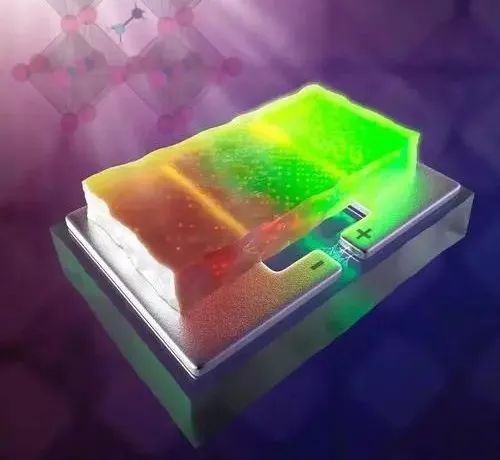
Overview:
Perovskite nanodots, known for their colossal magnetoresistance, high ionic conductivity, electrocatalytic properties and redox activity, have vast potential for applications in light absorption, storage, catalysis and sensing.
Perovskites are crystalline structural materials and represent a new class of functional materials. Currently, its stability problems constitute a significant barrier to development. However, research into new perovskite structures is advancing, drawing considerable attention to perovskite nanodots.
Future trends:
According to the “Research Report on China Perovskite Nanodot Market Development Status and Industry Forecast” released by the Market Research Network, a team from the Queensland University of Technology (QUT) in Australia, is integrating perovskite nanodots, made from human hair, into solar cells. .
These nanodots form a protective layer on the surface of the perovskite, protecting the material from various external factors, improving its stability and increasing photovoltaic conversion efficiency. This can also reduce production costs.
Such advances are crucial for the large-scale development of perovskite solar cells, indicating a promising future for perovskite nanodots.
33. Metals Microgrid

Introduction:
Microlattice metals are constructed from tiny hollow tubes interconnected to form a structure, with each tube diameter approximately 100 micrometers and wall thickness just 100 nanometers. Due to its hollow nature, the interior of the metal is made up of 99.99% air.
This metal is made primarily of light air, allowing it to rest on a dandelion or float on the ground like a feather in height. Many may question the strength of such a light metal, suspecting it to be extremely fragile. However, this is not the case. Microcrosslinked metals are exceptionally strong and have a high level of compressive strength.
Future Development Trends:
As battery electrodes and catalyst carriers, microcrosslinked metals are expected to revolutionize the future of aviation and spacecraft manufacturing. They promise to reduce the mass of NASA's deep space exploration vehicles by 40%, which is crucial for future missions to Mars and beyond.
34. The cities
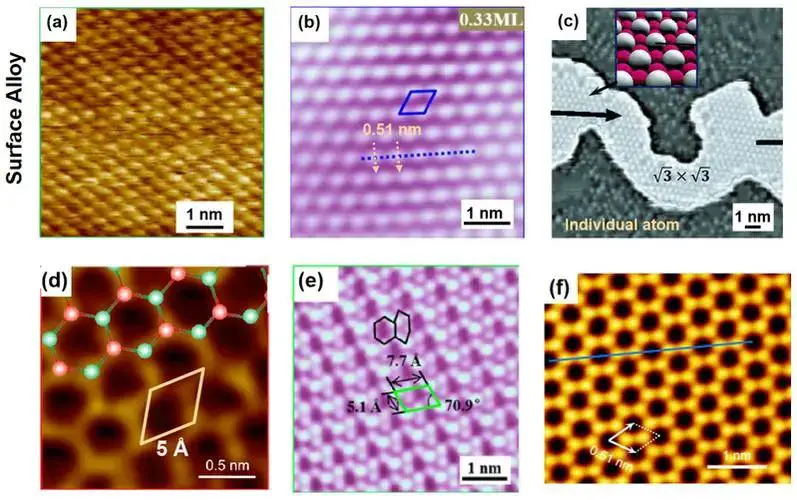
Overview:
Stanene, also known as a single layer of tin atoms, features a two-dimensional honeycomb structure similar to graphene, making it a new quantum material. Its crystalline structure is based on diamond-like alpha-tin and, due to its layerless configuration, it cannot be produced by mechanical exfoliation, resulting in extremely high technological production barriers.
Compared to other two-dimensional materials such as graphene, silicene and germanene, stanene has longer bonds and superior electrical conductivity and is poised to become the world's first supermaterial capable of achieving 100.0% electrical conductivity at room temperature.
Future trends:
Industry analysts indicate that as an emerging two-dimensional material, stanene has a broad application prospect. With continued innovation and advancements in research and development technology, the range of stanene applications is expected to expand and the industry is likely to achieve commercial development.
Technical barriers in the stanene industry are high, and in recent years, numerous Chinese research teams have made significant progress in studying stanene materials, positively impacting the industry's growth.
35. Molecular Superglue

Overview:
Molecular superglue is an adhesive discovered in 2013 by Mark Howarth and his research team at the Department of Biochemistry at the University of Oxford, derived from proteins released by the bacteria Streptococcus pyogenes during cell invasion.
Inspired by the proteins emitted by Streptococcus pyogenes, the adhesive is made up of two protein components that can separate, but reconnect like glue upon contact. Known as molecular superglue, this adhesive features high adhesion strength, excellent tolerance to extreme temperatures and resilience in acidic and other aggressive environments.
Future perspectives:
Looking to the future, this material has potential applications in cancer diagnosis; molecular superglue can bond to metals, plastics and various other substances, overcoming the common problem of poor adhesion between conventional coatings and metals.
36. Metamaterials

Introduction:
Metamaterials, a term that emerged in the 21st century, refer to special composite materials or structures that have extraordinary physical properties not found in conventional materials. This is achieved through an ordered structural design of important physical dimensions.
Metamaterials intersect with numerous disciplines such as physics, chemistry, optoelectronics, materials science, semiconductor science and equipment manufacturing, positioning them at the forefront of global research with strategic significance.
The prestigious Science magazine listed metamaterials as one of the top ten scientific advances in the first decade of this century, while Materials Today magazine also hailed them as one of the ten most significant advances in materials science in the last fifty years.
Future trends:
Metamaterials are about to become a new material with unlimited potential. However, they are still some distance away from true large-scale industrialization, with many challenges yet to be overcome. These challenges will guide mainstream research into metamaterials, potentially leading to new technological advances and achievements in this field.
37. Quantum Metals

Overview:
Quantum is an essential concept in modern physics, representing the smallest fundamental unit of matter and energy. Quantum metal is a metal composed of the smallest particle units and is a unique two-dimensional material. It has characteristics of common metals, as well as insulating and superconducting properties.
Under moderate magnetic fields, it behaves like a quantum metal, transitions to an insulator under strong magnetic fields, and becomes a superconductor below -272°C. This demonstrates the potential for research into the two-dimensional states of quantum metals.
Future trends:
Industry analysts indicate that superconductivity is a significant direction for quantum metals research. Superconductors, which exhibit zero electrical resistance below their critical temperature, can transmit electricity without loss and have wide applications in electronics, telecommunications, energy, transportation, medicine, nuclear industries, aerospace and more.
In 2021, the global superconductor market was valued at approximately US$7.6 billion and continues to grow. Superconductors can be categorized into low-temperature and high-temperature superconductors, with the former maintaining a dominant position and strong development momentum. Quantum metal, as a type of low-temperature superconductor, has substantial value in research and application.
38. Boron Graphene

Introduction:
Boron graphene, a two-dimensional material, is a single-layer planar atomic structure similar to graphene, composed of the element boron. This thin film is just one atom thick.
Artificially synthesized boron graphene is predicted to have a variety of structures, possessing unique properties and exhibiting many metallic characteristics, particularly exceptional electronic properties. It represents a new class of two-dimensional materials.
Future trends:
Industry analysts suggest that to drive technological advancements in the industry, there is a high level of interest in the research and application of new materials in the global market.
Government and capital investment in research into new materials is continually increasing and new high-performance materials are being developed and commercialized at an accelerated pace. As a new two-dimensional material, boron graphene has excellent electronic properties and enormous growth potential in industries such as electronics and energy.
In the short term, its application market has not yet been formed as it is still in the research phase. However, in the long term, compared to graphene, it has significant market potential.
39. Programmable Cement
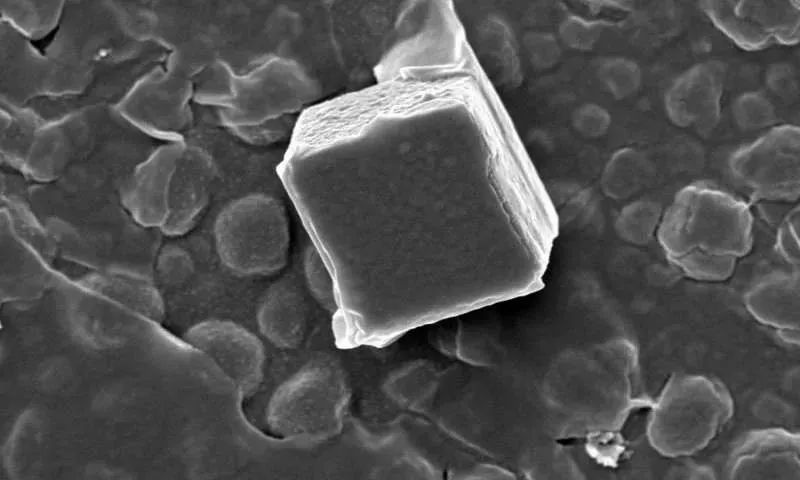
Overview:
Programmable cement, by managing the microstructure of cement particles, programs these particles to form specialized concretes with high density and low porosity. This increases the strength, waterproofing and corrosion resistance of the concrete.
Programmable cement is an innovative and high-tech type of cement. Not only does it have better overall performance, but it also significantly reduces environmental damage during production and application.
Future Development Trends:
Industry analysts indicate that China currently has less involvement in programmable cement research compared to the United States. However, as the country aims to transform from a manufacturing giant to an industrial powerhouse and achieve carbon neutrality and sustainable development goals, the Chinese government is actively promoting research into new high-performance and environmentally friendly materials.
In the future, investment in the research of new construction materials in China is expected to increase steadily, and the results in the research of programmable cement are expected to increase.
40. Ultrafine Platinum

Overview:
Ultra-Thin Platinum is a new method for quickly and cheaply depositing thin films of platinum, significantly reducing the amount of metal needed for fuel cell catalysts, thus greatly reducing their cost.
Future outlook:
This material could be employed in fields such as hydrogen fuel cells in the future.
41. Platinum alloys
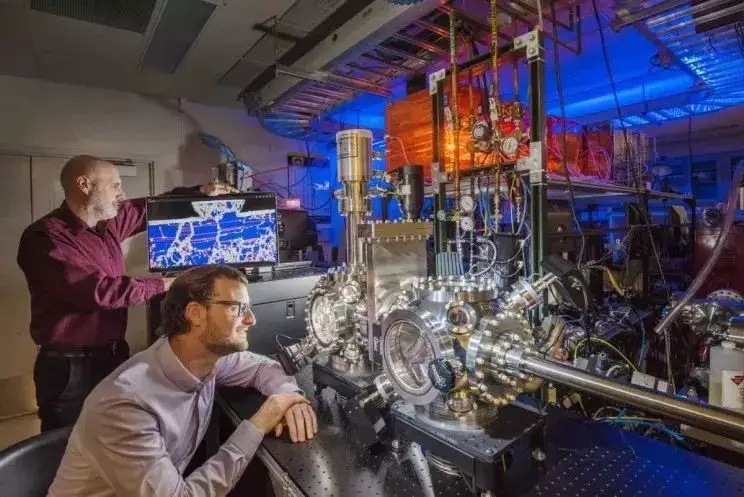
Overview:
Platinum alloys are composed of platinum mixed with other metals such as palladium, rhodium, yttrium, ruthenium, cobalt, osmium and copper. As functional materials, they are used in temperature measurement, as catalysts, for electrical contacts, electrode materials, elastic materials and magnetohydrodynamic materials.
Platinum alloys for temperature measurement present high thermoelectric stability and accuracy at high temperatures, mainly involving platinum-rhodium, platinum-molybdenum and platinum-cobalt systems. Platinum-rhodium alloys have excellent high-temperature oxidation resistance and chemical stability.
Platinum-molybdenum alloy thermocouples are used for high-temperature measurements in vacuum or inert atmospheres and nuclear fields. Platinum-cobalt alloys, used in resistance thermometers, perform with high precision and sensitivity above 20K.
Platinum alloy catalysts are the only material used in the ammonia oxidation process for the production of nitric acid, mainly consisting of platinum-rhodium or platinum-rhodium-palladium alloy meshes.
Future trends:
Platinum alloys have a wide range of applications in high-temperature deformation materials, precision potentiometer winding materials, medical materials, jewelry and coins, with significant potential for future development.
42. Self-healing materials
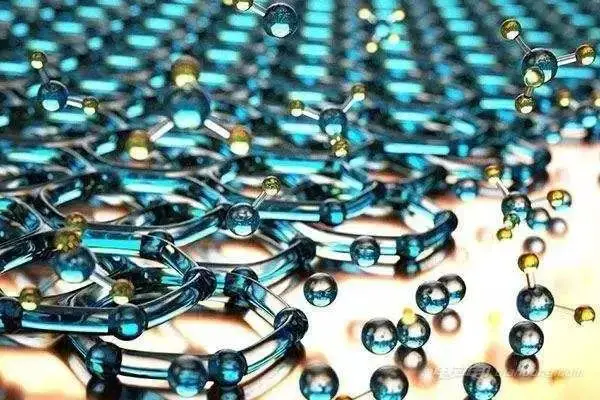
Overview:
Self-healing materials, as the name implies, are capable of automatically repairing damage without the need for significant intervention. This property not only extends the useful life of items, but also guarantees their safety and integrity, while reducing maintenance costs.
Research into self-healing materials began in the 1990s in the area of architectural concrete. However, it was only in 2001 that significant progress was made, when world-renowned electrochemist, American Scott White, and his team published an article in Nature. They developed self-healing polymeric materials by incorporating microcapsules filled with healing agents into an epoxy resin containing a catalyst, attracting widespread international attention to the field.
Future trends:
With the rapid advancement of self-healing technology, a variety of self-healing materials are poised to find wider applications in industries such as construction, automotive, aerospace, aviation and electronics. Its use is of great importance for conserving resources and achieving sustainable development.
43. Sunlight Blocking Glass Coating

Overview:
This innovative coating can self-adjust the transparency of the glass. At temperatures above 67ºC, this transparent coating transforms into a reflective surface with a mirror finish to deflect sunlight.
Future perspectives:
This material has potential applications in construction, transportation and other sectors.
44. Biomimetic Plastics

Overview:
Biomimetic materials are developed to emulate various features or characteristics of living organisms. Artificial materials designed and manufactured to mimic the operational modes of living systems and the structural principles of biological materials are known as biomimetic materials.
Biomimetic plastics not only have much higher strength than engineering plastics, but also exhibit remarkable toughness and resistance to crack propagation. They undergo minimal dimensional changes within a temperature range of -130°C to 150°C, and at room temperature their coefficient of thermal expansion is only about one-tenth that of conventional plastics.
Future trends:
As urbanization in our country accelerates, issues relating to social stability and urban security are gaining more and more prominence. Biomimetic plastic technology is a key enabler for infrastructure development. Therefore, with the advancement of socio-economic and information technology, the application of biomimetic plastics is about to become a new trend in the future.
45. Photonic Crystals

Introduction:
Photonic crystals are periodic optical nanostructures that affect the movement of photons in the same way that ionic networks influence electrons in solids. They occur naturally, manifesting as structural coloration and animal reflectors, and are promising for a variety of applications in different forms. As attractive optical materials, photonic crystals are used to control and manipulate the flow of light.
Future trends:
One-dimensional photonic crystals are already widely used in thin-film optics, with applications ranging from anti-reflective and highly reflective coatings on lenses and mirrors to color-changing paints and inks. Higher-dimensional photonic crystals are of great interest for both fundamental and applied research, with two-dimensional structures beginning to find commercial applications.
Commercial products involving two-dimensional periodic photonic crystals have emerged in the form of photonic crystal fibers, which use micrometer-scale structures to confine light with properties fundamentally different from those guided by conventional fibers used in nonlinear devices and to guide unusual wavelengths.
Although their three-dimensional counterparts are far from being commercialized, they could offer additional functionalities, such as the optical nonlinearity necessary to operate optical transistors used in optical computers, once certain technical aspects such as manufacturability and major difficulties have been overcome.
46. Erosion Resistant Ceramic Materials

Overview:
Erosion-resistant ceramic materials represent a highly promising advancement in high-temperature structural materials. With high melting points, they serve as superior refractory materials for applications such as high-temperature furnaces and furnace tubes. Among these ceramics, those categorized as structural materials are mainly composed of mechanical properties such as strength, hardness and toughness.
Although metals have been widely used as structural materials, their susceptibility to corrosion and oxidation at high temperatures makes them unsuitable for such conditions. The advent of high-temperature structural ceramics addresses the shortcomings of weaker metallic materials. These ceramics are resistant to high temperatures, oxidation and acid-base corrosion.
Future trends:
Erosion-resistant and high-temperature ceramics offer insulation, temperature resistance, corrosion resistance and robust mechanical properties. High temperature ceramic insulating coatings are recognized for their environmental compatibility, efficiency and multifunctionality, securing an important place in the specialized coatings sector.
47. Air Conditioning Wall Material Alternatives

Overview:
Hydroceramics is a material composed of hydrogel spheres that can swell up to 400 times their original volume when submerged in water.
Future trends:
Due to this remarkable property, the spherical spheres absorb liquids that will evaporate into the surrounding air during hot weather, thus providing a cooling effect.
48. Infinitely recyclable plastics

Overview:
Infinitely recyclable plastics refer to those that can be recycled indefinitely. Compared to conventional plastics, infinitely recyclable plastics can be reprocessed, preventing the damage caused by plastic products entering the environment, thus offering significant ecological benefits. Unlike biodegradable plastics, infinitely recyclable plastics do not degrade in nature but can be reused, providing substantial economic value.
Future Development Trends:
Infinitely recyclable plastics have a broad market perspective in the context of sustainable development strategies. Industry analysts indicate that common plastics currently face several problems regarding ecological and economic value. Infinitely recyclable plastics can solve these problems to the greatest extent and replace existing plastics in the manufacture of various products.
49. 4D printing materials

Introduction:
The main materials used in 4D printing are polymers. In 2014, scientists developed a tension-sensitive polymeric fiber that can be made into dresses capable of automatically adjusting to the shape and movements of the wearer's body.
Future trends:
Smart materials are at the heart of 4D technology. However, as research in this field is still at an early stage, there are only a few mature materials ready for market deployment, with polymers being the main focus. This presents opportunities and challenges. A key area of current research is investigating the potential of ceramics, metals, biological substances and composites as printing materials.
50. Material that erases wrinkles

Overview:
This delicate and smooth polymer, when applied to the skin, can instantly tighten and lift, effortlessly eliminating wrinkles.
Future outlook:
This material holds great promise for the development of skin care products and the treatment of skin conditions.
How does AI technology speed up the process of developing high-performance materials?
AI technology accelerates the process of developing high-performance materials mainly through the following aspects:
Improving modeling accuracy and the ability to generate new functions: The main innovation of AI materials science lies in the optimization of algorithms, especially the application of deep learning technology. This significantly improves modeling accuracy, thereby more accurately predicting the performance and functions of new materials.
Materials Genome Initiative: By establishing the infrastructure for new materials innovation, AI technology helps to at least double the speed from research and development to materials application, while halving the cost. In this process, the establishment of a database is fundamental, providing a basis for material genome engineering.
High-throughput, automated, and intelligent experiments: AI technology has promoted high-throughput, automation, and intelligence in materials experiments. This not only improves the efficiency of experiments, but also promotes the deep integration of theoretical simulations and experimental data, thereby guiding the design and optimization of new materials.
Combination of big data and machine learning methods: The machine learning method that combines high-precision function and deep potential built on AI technology with high-throughput calculation can predict frontier materials such as topological insulators, catalytic materials, two-dimensional, etc.
Solve the “bottleneck” problem: AI technology, especially research driven by big data technology, provides effective means to solve difficult problems in the field of materials science, accelerating the process of developing new materials.
Application of Materials Informatics: Efficient use of AI for materials informatics research, advancing materials development through property prediction, is an important aspect of innovative AI methods in the field of materials science.

